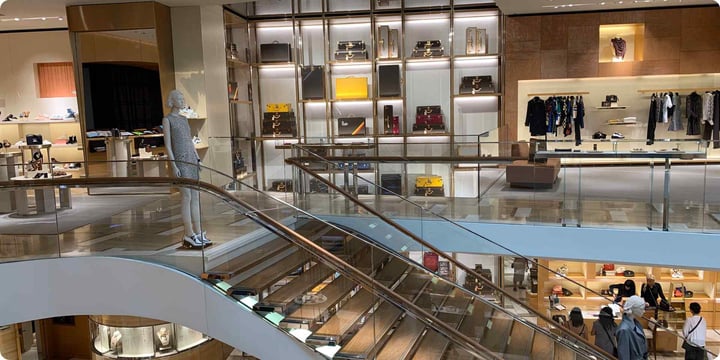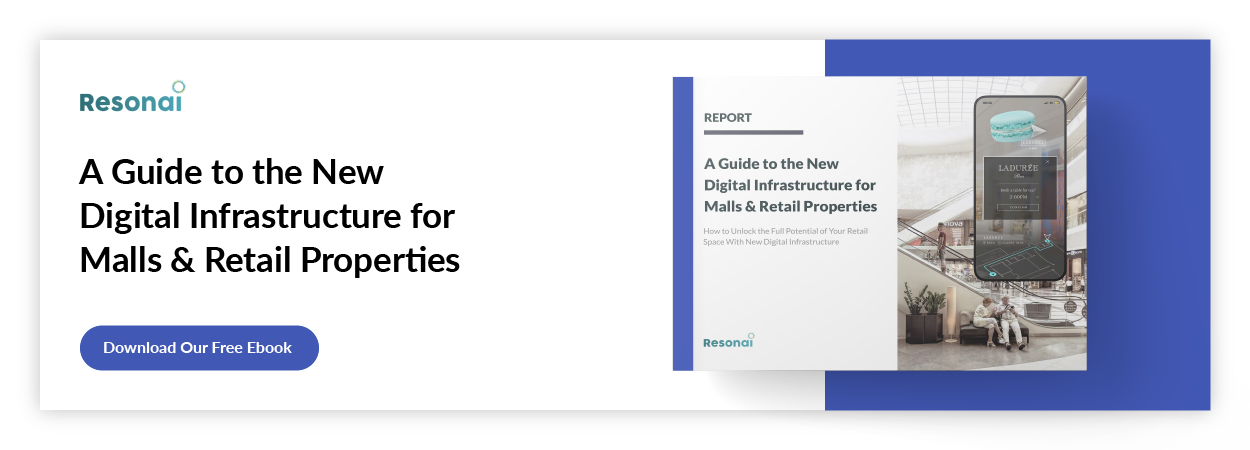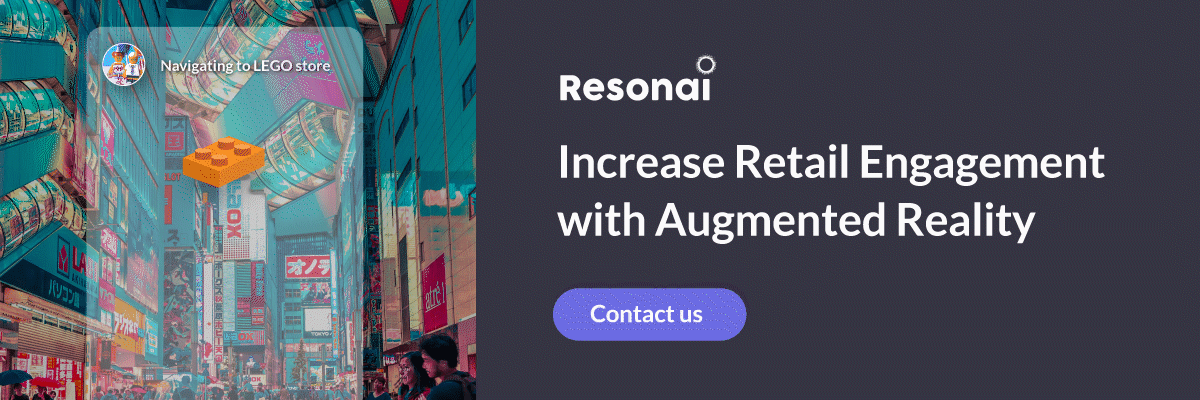Predictive Analytics for Retail Stores: How to Forecast Success
Predictive analytics can help retailers forecast demand, optimize prices, and more.

Brick & mortar retail has been the backbone of global consumer commerce for decades. Even as ecommerce channels gain traction with mainstream shoppers, more than 85% of consumer retail sales still go through brick and mortar locations. That said, no industry has ever stayed relevant by resting on its laurels. Leading retail professionals understand the importance of leveraging modern technology to sustain profitability, and predictive analytics in retail is one such solution.
While not precisely a crystal ball, predictive analytics in retail can reveal how customers explore shopping environments, interact with products, and make purchasing decisions. Despite the obvious benefits of that kind of data, many retailers are unaware of the full spectrum of predictive analytics retail insights they could have at their fingertips.
This article will define predictive analytics within a retail context and highlight its most impactful applications.
Want to learn more about how retail analytics impact your world? Check out our article, "Retail Analytics: The Ultimate Guide"
Jump to a section
What are predictive analytics in retail?
How can retailers obtain data?
What are predictive analytics in retail?
Predictive analytics are a form of statistical analysis that use data mining, statistical modeling, and machine learning to extrapolate trends from historical facts and current events. The practice is shared across industries and educational fields, but retail enterprises typically use it for risk assessments and decision-making.
When retailers first adopted predictive analytics, they analyzed sales data to determine ideal price points and promotional strategies. Today, predictive analytics in retail are exponentially more complex, covering loyalty metrics, store sizes, consumer demographics, inventory management, product assortment, and much more. The good news is technology makes it far easier for retail brands to monitor factors that contribute to a successful sale. The bad news is competitors can also often access these tools, making it difficult to stand out in a crowded market.
As a result, retailers are looking for new ways to understand their target market and differentiate their offerings. One of the most promising techniques is to analyze the in-store experience, mapping the complete customer journey — literally and figuratively — to understand key engagement factors. With these insights, retailers can structure retail store layouts, optimize pricing, and manage inventory in ways that maximize sales and customer satisfaction.
How can retailers obtain data?
Modern retailers can find relevant data from any number of sources. Most focus on point-of-sale transactions — whether in-store or online — to understand what products move at a particular price. The most effective predictive analytics strategies link POS data to a broader customer journey through website profiles, loyalty programs, or even social media interactions.
If retailers want to go a step further, they can invest in infrastructure that maps the in-store customer experience. This approach lets storefronts track how customers use and travel through a particular space. This typically requires three components:
- Building a digital twin: A digital twin is a 1:1 computer-based recreation of a physical location — in this case, a retail store. It can display the various shopping categories, how products are arranged on shelves, and even interior lighting effects.
- Install online-connected sensors: With simple Internet-of-Things compatible sensors, retailers can connect their storefront to a corresponding digital twin and update details in real-time.
- Sensor-free insights: Did you know that the Vera smart building platform by Resonai provides retailers with these same powerful insights without the need for costly external hardware or sensors. Get in touch with us to learn more.
- Generate visualizations and reports: The digital twin lets analysts create visualizations and detailed reports of in-store activity. For example, it could chart customer paths as they arrive, navigate the store, and exit through checkout.
Retailers can analyze their data as individual metrics or contrast them with other data sets. For example, combining foot traffic with sales data tells you what categories a customer shopped at — and which ones they ignored during their journey. Examples of predictive analytics retail insights include:
Measuring foot traffic
Foot traffic is an essential measurement for predictive analytics in retail stores. In its simplest form, it lets retailers visualize how customers move through the entire shopping floor. When supplemented with other data, foot traffic can provide insights into the impact of promotional campaigns and in-store displays.
Outside of the digital twin, retailers can analyze foot traffic in real-time with positional tracking systems that chart shopping paths. This data is typically visualized as a heat map where aisles with the heaviest use display the brightest colors. Any given visualization presents the highest volume spaces, signifying anything from popular sales to unintended congestion points. Machine learning processes can analyze the traffic in detail to provide more focused insights.
Foot traffic analysis can inform decision-making processes in many ways, from identifying display locations to managing inventory layouts. In the wake of COVID-19, these tools inform social distancing strategies that reduce gridlock in busy aisles. Some predictive analytics tools can even simulate foot traffic, which helps retailers find storefront configurations that maximize revenue and customer safety.
Forecasting demand
Predictive analytics doesn’t just highlight customer behavior; it sheds light on product trends as well. Any given retail storefront houses tens of thousands of products across its customer-facing shelves and inventory storage. Predictive analytics systems take historical sales data, identify trends, and predict when they will reoccur.
Forecasting product demand has two primary benefits. First, retail decision-makers can use these insights to optimize inventory, either by assigning more shelf space or featuring the product in prominent display areas. Second, it lets retailers flag items for frequent restocking. If a digital twin monitors inventory, employees can prioritize bringing out specific items long before customers ask about them.
Optimizing pricing
Knowing which products will be in demand is one thing — knowing how much customers will pay for them is another. Some customers will purchase their favorite items at any price. Others will wait until a sale begins, some will buy in bulk, and others focus exclusively on specific product sizes. And that’s before we consider competitor prices and how they influence buying decisions.
Developing a pricing strategy for any retail environment is challenging, but predictive analytics does offer some solutions.
- Standard price: Machine learning systems can calculate the right time to reduce a price or when it should increase.
- Discounts: Historical data can reveal the ideal promotional discount that encourages customers to try a new product.
- Sale frequency: If products have frequent discount sales, customers may avoid buying them at the standard price. Analyzing sales data can determine a promotional frequency that maximizes customer engagement.
How Vera can help
If you want a robust predictive analytics solution that maps the complete in-store experience, Resonai can help. Our augmented reality platform for enterprises, Vera, creates a highly accurate 3D digital twin with built-in data capabilities without the need for external sensors or hardware. Retailers can use these visualizations to better understand traffic flows, user behaviors, product interactions, and much more — all in real-time.
Are you ready to learn more? Get in touch with Resonai today and set up a free demonstration.
Subscribe to Our Newsletter!
Read More
Retail Analytics: The Ultimate Guide
Every modern retail business — from boutique shops to sprawling supermarkets — thrives on data. As...
5 High-Value Use Cases For Retail Analytics
Brick-and-mortar retailers have been through a gauntlet of change. The rise of ecommerce put many...
Customer Analytics In Retail: How Data Drives Dollars For Vendors
Business is an information game: the more you know, the better your decisions, and the higher your...

